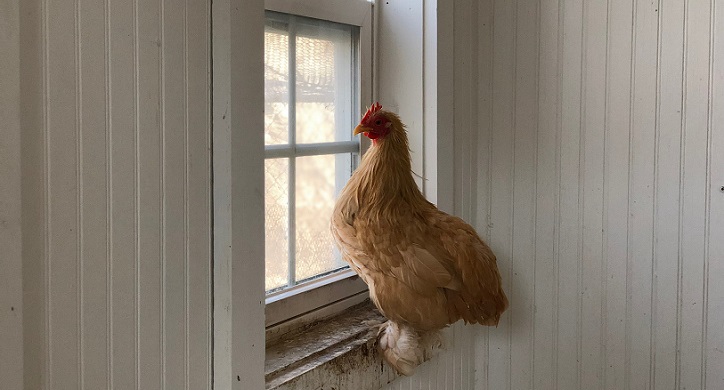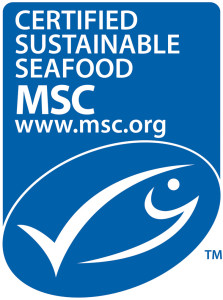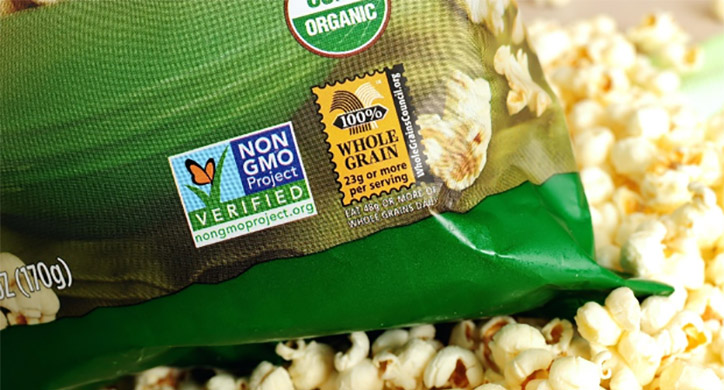My wife and I sat down at our favorite local eatery and stared at the mushroom pizza in front of us for what seemed like an unusually long time. Over the many years of our marriage, we’ve usually grabbed a slice before the pie actually hit the table. So, what’s going on here tonight?
That’s a lot of mushrooms, I kept thinking over and over again. An awful lot. How do I know where they came from? Which country were they grown in? Who knows what’s been sprayed on them, or by whom, or when?
How do I know they were stored and handled safely back in the kitchen or on the way here from who knows where.
This place isn’t exactly famous for its Michelin star.
And what about the flour? The cheese? The tomato sauce? Oh my gosh, I can see the headline now. Local Man Murders Wife with Mushroom Pizza.
Could it be I am afraid of my food?
Food like this has sustained me over seven decades. I’ve eaten more pizza, hot dogs, burritos, sushi, in-law’s casseroles, school lunches, roadside diner blue-plate specials, barbeque, and even more fruit and vegetables than Godzilla. Why should I even consider the threats posed by food, let alone allow this enormously satisfying staple of my life to get cold?
Maybe it’s because I’ve been exposed to a steady drumbeat of dire cautionary tales and outright warnings about all sorts of things that would make my food suspect. It’s full of carcinogens and other nasty things that will kill me or turn me and my progeny into vile, godless mutants. It’s full of empty calories and tons of sugar that will deprive me of the actual nutrition I need to be healthy.

I am warned by some social media platforms that it’s produced by greedy, uncaring, and faceless entities who rape and pillage the consumer landscape to secure outrageous profits. It’s being genetically manipulated to replace its nutritional value with longer shelf-life and other marketing-driven priorities.
It’s handled and prepared by indifferent people in unsanitary conditions. It’s driving climate change that dooms all of us to a bleak and very hot circle of Dante’s underworld. And on and on and on…
An avalanche of agendas
Come to think of it, that’s not so much a drumbeat as an avalanche. How much of that is pure hyperbole and ideological agendas, I can’t say. And that’s what gives me the greatest pause right now, staring at this pizza.
Why should I be afraid when most of that fear comes from sources I don’t know – or trust – to tell me the straight of the matter?
How can the very stuff that sustains me…that gives me (and my family and companions) so much pleasure…that keeps over 8 billion people alive and energetic enough to pursue a better life and a better world…be such a cause of fear?
As a reasonably well-educated and life-experienced individual, I know the first response should be to qualify my sources of information. Who do I trust to tell me the truth – or to at least be fair in telling the different sides of any food-related story? Who has an agenda?
 Ideologues and well-intentioned do-gooders who might be telling me this to advance a point of view they consider more moral, more rational, more something.
Ideologues and well-intentioned do-gooders who might be telling me this to advance a point of view they consider more moral, more rational, more something.
Or maybe it’s people with an economic stake in creating an environment favorable to one interest at the expense of another.
Or could it just be bat-shit crazies who get their instructions on what to say from Elvis and The Alien Consortium of Tin-Foil Hats?
I want a combination of Walter Cronkite and Mr. Rogers to help me figure this out.
Is all food dangerous?
That kind of truth-seeking can be a daunting task. We’re surrounded every day by waves of opinion about our food and the system that produces it. Google ‘dangers of food’ and pick from the 7,310,000 responses to see the latest and gravest threats.
Let me help speed you on your way with just a few examples of what lies ahead for you in that quest:
-
Unsafe food containing harmful bacteria, viruses, parasites, or chemical substances causes more than 200 diseases, ranging from diarrhea to cancers. (World Health Organization).
-
“Around the world, there are certain dangerous foods that can cause everything from mild food poisoning to, in extreme cases, death.” World’s Most Dangerous Foods, MSN.com
-
“It’s important to keep food safety in mind when selecting a shopping cart rather than just avoiding that undesirable squeaky wheel… The first point of contact for most food is the shopping cart, and it’s important to wipe down the handle to remove germs” (The Poultry Site).
-
Foods That Kill Testosterone: Dairy Foods. Soy Foods. Trans Fats. Peppermint. Alcohol.
-
Twelve Foods Bad for the Planet: Rice. Genetically Modified Foods. Sugar. Meat. Fast Food. Foods Containing Palm Oil. Packaged and Processed Food. Many Non-Organic foods. Some Seafood. White Bread. High Fructose Corn Syrup. Much Non-Local Food.
That last one invites the question: Is there any food that doesn’t harm the planet?
Demanding common sense
None of this horror list is designed to suggest that thinking about food safety is unimportant. I’m not about to eat anything that I truly believe will harm me, let alone anything that might kill me. I know enough to respect my food and take prudent steps to eat safely and wisely. But fear my food? I don’t think so. Come on, people.
One of my favorite John Wayne quotes summarizes the situation succinctly:
“Life is hard. It’s harder when you are stupid.”
The point is, we can’t be stupid when it comes to evaluating the safety – and nutritional value – of the food we eat. Let’s not let this avalanche of fear-mongering kill our ability to make informed, rational decisions about our food.
There’s an avalanche of real and potential misinformation, all right. But there is another avalanche coming down the mountainside – one based on science and fact, driven by growing recognition of the need for accurate information essential to making good food choices.
 The climate of fear seems to me to be changing.
The climate of fear seems to me to be changing.
Like most others, I have no peer-reviewed, data-driven facts to back that up. But I have my own common sense and a lot of reasons to respect my food – but not to fear it.
-
Few, if any, would deny that Americans seem to be increasingly aware of the need for safe and nutritious food. That’s true not just of consumers but among producers, the scientific community, policymakers, food manufacturers, and voters
Whether it comes from the outreach efforts of agricultural extensions services, commercial marketing with an increasing educational content, media attention or any other communications channel, consumers inarguably have benefitted from a rising public focus on food and food safety.
We’re growing smarter every day, too.
-
Maybe just as important, as we learn more about our food and the system that produces it, confidence in our food seems to grow in parallel. A study by Food Insight found that 70 percent of Americans say they are “very” or “somewhat” confident about the safety of the U.S. food supply. That’s an impressive number – and a slight increase from a year ago.
-
I believe in the power of scientific advancements and continuing research to achieve better, greater things. The available data on food-related research shows an aggressive partnership between the public and private sector in exploring various improvements to the foods we eat and how we produce them. U.S. private sector spending has increased, even as public sector spending has declined. The total is well into the billions of dollars each year.
However we measure it, there’s a potful of money going to produce steps forward in our food system. It’s harnessing the collective expertise and passion resident in a blue-chip roster of universities, land-grant colleges, and private and commercial organizations.
-
I’m not alone in my attention to food safety. There are a lot of allies and watchdog organizations after the same goal. USDA’s Food Safety and Inspection Service (FSIS) employs 9,000 people to enforce the Federal Meat Inspection Act, the Poultry Products Inspection Act, and the Egg Products Inspection Act, as well as humane animal handling through the Humane Methods of Slaughter Act.
-
Beyond that, FSIS works with other USDA entities such as Animal and Plant Health Inspection Service (FSIS) and the Food and Nutrition Service and other federal and state organizations focused on consumer health and safety. The FAO established, CODEX, located in Rome, that monitors international food safety. The combined effort means there are literally tens of thousands of people out there actively working to keep my food safe.
-
That doesn’t include state regulatory and safety entities or the scrutiny provided by an aggressive media and various food-safety activists. The restaurant industry notes that there are about 750,000 restaurants in the United States, providing food for 72 percent of Americans at least twice each week. FDA’s Food Code provides a detailed model for sanitary inspection by local and state authorities. In simple terms, there are a lot of eyes on how our food is handled, prepared and served. Mine are just two of them.
-
The roster of NGOs, charitable organizations and private citizens working to reduce waste, expand food availability, reach those most in need and educate the public on food and food safety is steadily expanding. FoodTank.com has recognized 122 such organizations, all committed to some aspect of improvement in the global food system.
Consider these questions…
The reality is that we’re making great strides in the right direction in providing the world with the safest, most nutritious food in all of human history. The system is far from perfect, certainly. There is still important work to do.
We all bear individual responsibility for having some basic understanding of what the best foods are, how to handle and store them, and how to prepare them for the family table.
But come on, there’s ample cause to believe there’s no need to fear our food…
…at least not in the way some of these people want us to fear it.
When it comes to my food, I’m proudly wearing my John Wayne tee shirt that tells the world, “DON’T BE STUPID.”
But even so, I’m going to continue to do my best to sort out the credible snowflakes from the misleading and outright wrong ones. I don’t pretend to have a complete and perfect solution for dealing with the avalanche of misinformation, half-truths, subjective opinion, conjecture, and outright lies out there. A perfect solution will take more time than I have, and I suspect you have neither.
So I’ll have to rely on a few simple guidelines for deciding just how much I should fear my food. I share them with you, loyal reader, for what they may be worth to you.
What do the experts I know and trust have to say?
It may start with my doctor, or respected health and nutrition specialists associated with credible science and peer-reviewed studies. Good things happen—like smart food decisions—when I narrow my search to trustworthy sources rather than a wild-wild west of opinion and allegation.
What credible sources exist through the media?
What publications or websites or other channels of communication exist to address food issues in a fair, responsible, and objective way? Where does my doctor turn to stay on top of these kinds of issues – beyond the scientific journals too dense for me to absorb? What do reputable health and nutrition experts read and view and listen to?
What do my friends have to say?
What can I learn about our food from the simple yet powerful tool of actual human observation? What do the healthy families I know eat? What are their dietary habits? It may not provide a complete answer to my questions. But it’s a starting point – and one that I can see and learn from first-hand.










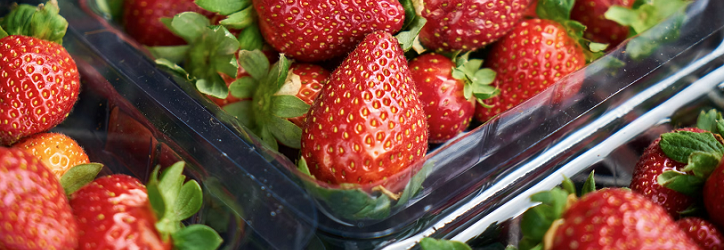




 On the other end of the packaging spectrum is highly complex, multi-layered packaging. Think that organic applesauce pouch or shelf-stable oat milk is recyclable?
On the other end of the packaging spectrum is highly complex, multi-layered packaging. Think that organic applesauce pouch or shelf-stable oat milk is recyclable?


 Better still, ask farmers in Sri Lanka about the 2021 flash-cut to organic farming. Without available practical options to replace commercial fertilizers,
Better still, ask farmers in Sri Lanka about the 2021 flash-cut to organic farming. Without available practical options to replace commercial fertilizers, 
 It’s simple: the world needs fertilizers to have a prayer of meeting the food needs of a growing world. It needs those fertilizers most in the parts of the world that can least afford them, and places where the alternatives to commercial fertilizers are most lacking.
It’s simple: the world needs fertilizers to have a prayer of meeting the food needs of a growing world. It needs those fertilizers most in the parts of the world that can least afford them, and places where the alternatives to commercial fertilizers are most lacking.























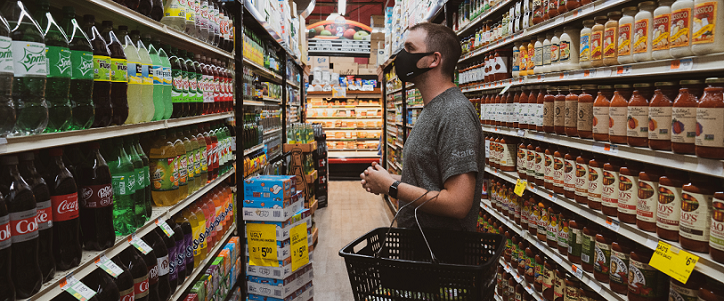


 We elected to continue that work by seeking current price information for the same 15-item food basket, but with data from the Northeast, mid-Atlantic, deep South, upper Midwest, Gulf Coast, Mountain region, and West Coast.
We elected to continue that work by seeking current price information for the same 15-item food basket, but with data from the Northeast, mid-Atlantic, deep South, upper Midwest, Gulf Coast, Mountain region, and West Coast.







 While the focus on climate change comes as no surprise, the farm community anxiously awaits some sign of the approach to be taken. Farm leaders urge policymakers to think in terms of carrots rather than sticks. That is, they note that the farm community by and large is supportive of the broad effort to act responsibly on matters that affect the climate, and the environment.
While the focus on climate change comes as no surprise, the farm community anxiously awaits some sign of the approach to be taken. Farm leaders urge policymakers to think in terms of carrots rather than sticks. That is, they note that the farm community by and large is supportive of the broad effort to act responsibly on matters that affect the climate, and the environment.
 Continuing economic challenges from the pandemic, coupled with a generally more ambitious agenda of government initiatives, mean an almost certain review and revision of tax laws. It will likely involve examining a range of tax policies, including capital gains, gift taxes, inheritance taxes, accounting rules, and more.
Continuing economic challenges from the pandemic, coupled with a generally more ambitious agenda of government initiatives, mean an almost certain review and revision of tax laws. It will likely involve examining a range of tax policies, including capital gains, gift taxes, inheritance taxes, accounting rules, and more. 




 Blue Zones, in partnership with Healthways, created what is called the Blue Zones Project which has set out to bring the Power 9 longevity principles to entire communities. To focus on changing environments, and creating long-term sustainable change for future generations.
Blue Zones, in partnership with Healthways, created what is called the Blue Zones Project which has set out to bring the Power 9 longevity principles to entire communities. To focus on changing environments, and creating long-term sustainable change for future generations.

 AquaBounty’s indoor grow-out tanks prevent escapement and eliminate parasites that lead to disease.
AquaBounty’s indoor grow-out tanks prevent escapement and eliminate parasites that lead to disease.



 AquAdvantage salmon cannot make the leap from a land-based indoor tank to the wild. All these facilities have tightly-closed septic and water systems to prevent eggs or fish from escaping.
AquAdvantage salmon cannot make the leap from a land-based indoor tank to the wild. All these facilities have tightly-closed septic and water systems to prevent eggs or fish from escaping.
























 In
In  Farmers in Burkina Faso are calling on the government to fast-track the approvals for Bt cowpea in response to COVID-19. Burkina Faso farmer Wiledio Naboho said COVID-19 has negatively impacted production this year and farmers are counting on GM crops to help them increase productivity.
Farmers in Burkina Faso are calling on the government to fast-track the approvals for Bt cowpea in response to COVID-19. Burkina Faso farmer Wiledio Naboho said COVID-19 has negatively impacted production this year and farmers are counting on GM crops to help them increase productivity.




























